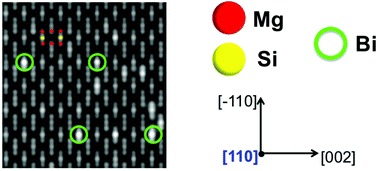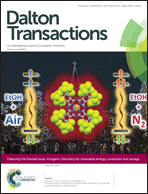Sb- and Bi-doped Mg2Si: location of the dopants, micro- and nanostructures, electronic structures and thermoelectric properties†
Abstract
Due to increasing global energy concerns, alternative sustainable methods to create energy such as thermoelectric energy conversion have become increasingly important. Originally, research into thermoelectric materials was focused on tellurides of bismuth and lead because of the exemplary thermoelectric properties of Bi2Te3 and PbTe. These materials, however, contain toxic lead and tellurium, which is also scarce and thus expensive. A viable alternative material may exist in Mg2Si, which needs to be doped and alloyed in order to achieve reasonable thermoelectric efficiency. Doping is a major problem, as p-type doping has thus far not produced competitive efficiencies, and n-type doping is problematic because of the low solubility of the typical dopants Sb and Bi. This investigation shows experimentally that these dopants can indeed replace Si in the crystal lattice, and excess Sb and Bi atoms are present in the grain boundaries in the form of Mg3Sb2 and Mg3Bi2. As a consequence, the carrier concentration is lower than the formal Sb/Bi concentration suggests, and the thermal conductivity is significantly reduced. DFT calculations are in good agreement with the experimental data, including the band gap and the Seebeck coefficient. Overall, this results in competitive efficiencies despite the low carrier concentration. While ball-milling was previously shown to enhance the solubility of the dopants and thus the carrier concentration, this did not lead to enhanced thermoelectric properties.

- This article is part of the themed collection: Inorganic Chemistry for Renewable Energy Conversion and Storage

 Please wait while we load your content...
Please wait while we load your content...